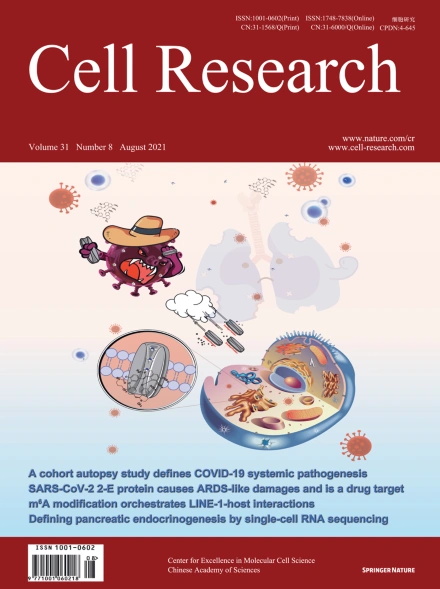
Advanced Search
Submit Manuscript
Advanced Search
Submit Manuscript
Volume 31, No 8, Aug 2021
ISSN: 1001-0602
EISSN: 1748-7838 2018
impact factor 17.848*
(Clarivate Analytics, 2019)
Volume 31 Issue 8, August 2021: 886-903
Sequential progenitor states mark the generation of pancreatic endocrine lineages in mice and humans
Xin-Xin Yu1,2,3,4 , Wei-Lin Qiu1 , Liu Yang1,2,4 , Yan-Chun Wang5 , Mao-Yang He3,6 , Dan Wang1,2,4 , Yu Zhang1,2,4 , Lin-Chen Li2,3,4 , Jing Zhang5 , Yi Wang5 , Cheng-Ran Xu1,2,3,*
1Department of Human Anatomy, Histology, and Embryology, School of Basic Medical Sciences, Peking University, Beijing 100191, ChinaThe pancreatic islet contains multiple hormone+ endocrine lineages (α, β, δ, PP and ε cells), but the developmental processes that underlie endocrinogenesis are poorly understood. Here, we generated novel mouse lines and combined them with various genetic tools to enrich all types of hormone+ cells for well-based deep single-cell RNA sequencing (scRNA-seq), and gene coexpression networks were extracted from the generated data for the optimization of high-throughput droplet-based scRNA-seq analyses. These analyses defined an entire endocrinogenesis pathway in which different states of endocrine progenitor (EP) cells sequentially differentiate into specific endocrine lineages in mice. Subpopulations of the EP cells at the final stage (EP4early and EP4late) show different potentials for distinct endocrine lineages. ε cells and an intermediate cell population were identified as distinct progenitors that independently generate both α and PP cells. Single-cell analyses were also performed to delineate the human pancreatic endocrinogenesis process. Although the developmental trajectory of pancreatic lineages is generally conserved between humans and mice, clear interspecies differences, including differences in the proportions of cell types and the regulatory networks associated with the differentiation of specific lineages, have been detected. Our findings support a model in which sequential transient progenitor cell states determine the differentiation of multiple cell lineages and provide a blueprint for directing the generation of pancreatic islets in vitro.
https://doi.org/10.1038/s41422-021-00486-w